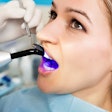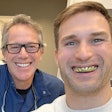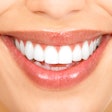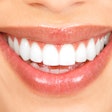This week, Dr. Diwakar Kinra returns with a clinical tip that can help alleviate some of the frustration around using a rubber dam in your dental procedures.
Click below to watch Dr. Kinra's advice, and make sure to learn more about CDOCS, including their hands-on workshops.
Video transcript
"Have you ever had a rubber dam that you're trying to modify because you're getting leakage out of it? Maybe you're working on a lower molar and, you know, the tongue's moving around and even though you place a rubber dam, it's starting to leak everywhere and saliva's coming through the dam.
"Well, this is one of my favorite types of modifying agents that I can use. It's called OpalDam. As you can see here, it's a great product and if you take a look at the picture here, you'll see that we were really able to modify in really tough-to-isolate type of cases.
"If you take a look at the video I made here, you'll see that it's really easy to apply. So even on a ceramic surface like this all-porcelain crown, I'm going to go ahead and dry the surface here. And then I'm going to go ahead and apply the oval dam circumferentially around this. Now you see, I've taken the rubber dam and I've isolated it with the material there.
"And I flipped the rubber dam material over the wings of the clamp, and now I've gone ahead and where there's any type of access to the oral cavity, I've isolated it with the OpalDam, and then we light cure it for 20 seconds. Once in a while, if there's a lot of material on there, I'll have to isolate it for maybe another 20 seconds and then I'm ready to go. I have a perfect hermetic seal around the tooth and now nothing from the oral cavity is getting into the tooth, and nothing from the tooth is getting into the oral cavity."



















